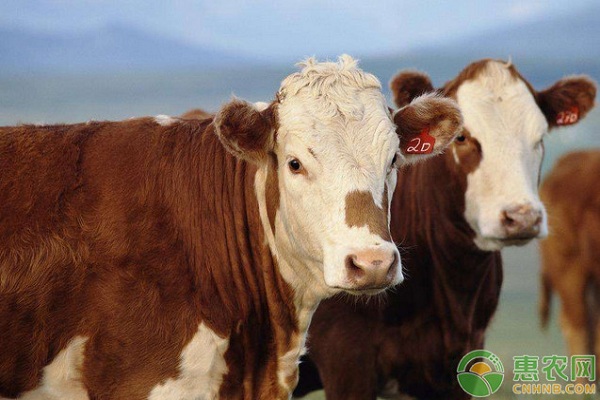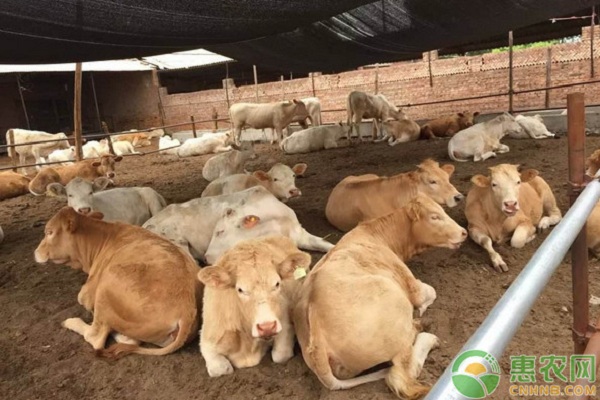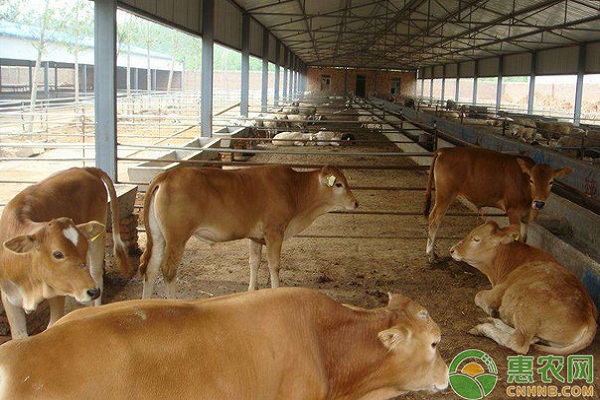In recent years, the price of beef in China has been good, so this has led to the development of the beef cattle breeding industry. Recently, many cattle farmers have consulted on the prevention and treatment of diseases related to beef cattle breeding. Today, Xiaobian introduces a disease prevention and treatment of beef cattle. technology.

1 common diseases
1.1 bovine viral diarrhea mucosal disease
Bovine viral diarrhea mucosal disease is a serious threat to the growth of beef cattle, mainly because the pathological features of mucosal diseases are caused by excretions and secretions, which cause pollution to feed and water quality, while beef cattle infections pass through the respiratory and digestive tracts. There is no special time for the onset of bovine viral diarrhea mucosa, which occurs all year round, especially for calves. The incidence of calf is 2~3d, body temperature is maintained at 40~42°C, intermittent diarrhea, excretion The substance presents mucus or blood with malodor. Aggravation of the disease will cause ulceration of the oral mucosa of the beef cattle. More seriously, if the pregnant beef cattle suffer from the disease, the newborn calf will be born with cerebellar dysplasia and blindness.
1.2 blood-sucking Pasteurellosis
This is a septicemia caused by Pasteurella multocida. At the beginning of the symptoms, the main symptoms are sluggishness, poor appetite, cough, and rapid heartbeat. As the condition worsens, the symptoms gradually manifest as high temperature, fever, pneumonia, and the like. If it is not treated in time, it will cause major diseases such as abdominal pain and dysentery, which will cause the beef cattle to become thinner and eventually lead to death.
1.3 hook-end spiral disease
As the name suggests, this disease is a common disease caused by a variety of Leptospira. The main symptoms are high fever of burdock 41 ° C, poor appetite, rapid breathing and heartbeat, and wilting; adult beef cattle can cause symptoms such as decreased appetite and fever.
2 Specific measures for prevention and treatment of common diseases in beef cattle
2.1 Prevention and treatment of bovine diarrhea and mucosal disease
It is necessary to carry out careful testing on the separation of serum blood and virus from diseased beef cattle to prevent the introduction of persistent infected cattle. It is necessary to strengthen the nursing of the beef cattle in the disease, enhance the resistance, relieve the symptoms to a certain extent, and use the antibacterial and sulfa drugs together with the body fluid such as sugar to prevent the virus from continuing to infect. The use of vaccines, according to the appropriate period of vaccination, can reduce viral infections, such as the injection of attenuated freeze-dried beef cattle, 22 months to produce immunity, thereby reducing the economic losses of farmers, paying special attention to the beef cattle can not be vaccinated during pregnancy.

2.2 blood-sucking pasteurosis prevention and treatment
It is necessary to check the beef herd. It can be treated with alkaline methylene blue. It can also be diagnosed by bacterial separation method, so that timely diagnosis and timely treatment can be avoided, so as not to affect the optimal treatment time. Beneficial beef cattle can be treated with antibacterial drugs plus multivalent serum drugs; for serious diseased beef cattle, a certain dose of tetracycline plus a certain concentration of glucose solution can be used for trickle treatment. Isolation of diseased beef cattle, strengthening the management of isolation of the barn, using a certain proportion of lime milk or bleaching powder, with a certain proportion of sodium hydroxide to disinfect the barn, to ensure environmental sanitation, to reduce the continued breeding of bacteria.
2.3 hook-end spiral disease prevention and control measures
Beef cattle suffering from leptospirosis must be strictly managed. Drug-treated beef cattle can be treated with streptomycin, oxytetracycline, tetracycline, etc.; resistance and immunity are continuously enhanced, and fluids are injected with supplemental body fluids. Diseased beef cattle, effectively improve the immunity of beef cattle; timely attention to the growth of beef cattle in the daily breeding process, do a good job in testing, timely discover the beef cattle infected with the disease; strengthen the management of beef cattle barn, timely disinfection, timely cleaning, timely elimination Rats should be sterilized in time; the tools used from water source to farmed beef cattle should be fully sterilized to effectively ensure the environment of the barn; to effectively prevent the disease of hook-and-worm, vaccine work must be done to enhance the resistance of beef cattle, for example. Injection of epidemic serum can ensure the resistance of beef cattle to a certain extent.

2.4 Scientific feeding and prevention of diseases
According to the type, sex, age, etc. of the cattle, it is strictly forbidden to change in order to prevent the occurrence of diseases such as malnutrition or gastrointestinal diseases due to random changes; create a good living environment for the barn, ensure that the barn is adequately exposed to sunlight, and ventilate Good sex, warm in winter and cool in summer, clean up in time, maintain reasonable temperature, and often brush the body of beef cattle, which can not only reduce the occurrence of diseases such as respiratory tract, stomach, skin, but also promote the breeding of beef cattle; maintain proper exercise, allow beef cattle to be outdoors every day. Free time, time control in 1~2h, so that beef cattle breathe fresh air, receive sunlight, prevent calcium deficiency; ensure that beef cattle have enough water every day, beef cattle have higher water quality requirements, so to ensure the normal growth of beef cattle, we must ensure The water source is clean to reduce the spread of the disease; the deworming work should be carried out on a regular basis, and the time is best selected once in the spring and autumn 2 seasons. The calves are carried out once in the first month and 6 months. Before deworming, we must do a good job of fecal inspection, understand the situation of parasites, select deworming drugs in a targeted manner, adhere to self-propagation, and must carry out related tests when introducing new cattle. The equipment for pulling the new cattle can only enter the field after disinfection and deworming work, but it still needs to be observed at 200m, and finally confirm the health and then join together.
3 Conclusion
This article has carried out in-depth discussion on the symptoms and specific prevention and treatment methods of various common diseases, and hopes to solve the disease problems that farmers have in the process of breeding. The application of beef cattle disease prevention and control technology is conducive to the normal development of aquaculture work, which is conducive to improving the economic benefits of farmers, and is more conducive to the development of animal husbandry in China, thus ensuring the food safety of our people.
Wenzhou Celecare Medical Instruments Co.,Ltd , https://www.wzcelecare.com